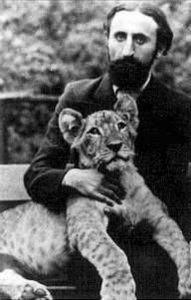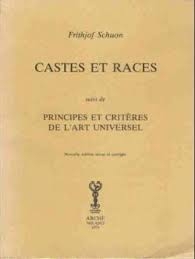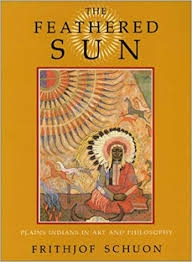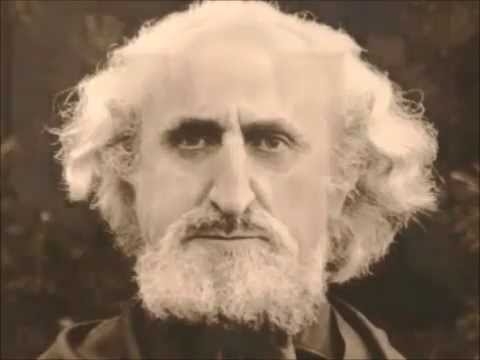Aside from some of Julius Evola’s writings, there is a dearth of writing on worldly matters from a Traditionalist standpoint. As John Morgan mentioned in a recent review [2], most Traditionalist writers focus solely on spirituality while evading the implications that Tradition has on more practical matters. Considering this, it was refreshing when I first discovered Frithjof Schuon’s two expansive essays, “The Meaning of Race” and “The Meaning of Caste.”[1] [3]
In these two essays, Schuon describes the significance of castes and races in regard to human nature, or more aptly, human being. His view rejects the notion of these categories as being fundamentally socially conditioned, constructed, or accidental, and instead analyzes them as expressions of human nature.
Schuon’s two essays discussing race and caste were published together and are complementary, but here I will only discuss “The Meaning of Race.” However, a quick overview of what the terms “caste” and “race” mean for Schuon is first necessary.
Unlike Evola, who put forward the idea of the “race of the Spirit,” Schuon classifies race in a completely separate category from psychic or spiritual heredity. While Evola and Schuon both believe there is a metaphysical component of the human being, Schuon denotes the “spirit” of a person strictly by the term “caste.” For those unfamiliar, “caste” for Schuon refers primarily to the fundamental character types present throughout all of humanity. The Indo-Aryan caste system, according to Tradition, was merely founded upon these natural distinctions. However, like Evola and the rest of the Traditionalist school, Schuon holds the view that the metaphysical component of a human being is more “absolute,” or more “real,” than the physical. He writes:
Caste takes precedence over race because spirit has priority over form; race is a form while caste is a spirit. Even Hindu castes, which were in origin purely Indo-European, cannot be limited to a single race: there are Tamil, Balinese and Siamese brahmins.
It is not possible, however, to hold that race is something devoid of meaning apart from physical characteristics, for, if it is true that formal constraints have nothing absolute about them, forms must nevertheless have their own sufficient reason . . . (147)
For Schuon, race has no metaphysical component, but rather is a “formal constraint” upon the expression of spirit: race is essentially a “style” through which the formless spirit is expressed, defining the “being,” and by extension the activity, of a people. In the same way that artistic genius has different ways of expressing itself depending on the particular culture it is expressed within, so spirit, which is universal, expresses itself through various racial styles. It could be compared to a single light shining through different colors of glass, the light gaining a different appearance and character depending on the color through which it shines. For Schuon, race is the root of culture, for culture is the creative activity of a race in which its inherent qualities and predispositions are exteriorized and formalized.
Schuon considers “black,” “white,” and “yellow” to be the three principal races. Of course, these are extremely broad categories, but he believes that all peoples fit into these categories, or else fit somewhere between them. The logic behind these three categories lies partly in his understanding of race as correlating to the three gunas, or modes, of Hinduism (tamas [sleep, ignorance], sattva [goodness], and rajas [passion], respectively) and lies partly in his analysis of racial styles. For example, while the Chinese and Japanese have distinct languages and cultures, Schuon would claim that they both exemplify the yellow race because both races exhibit a non-dramatic, “intuitive delicacy” in the field of art, and other qualitative similarities, such as a disdain for eloquence and a penchant for sober, elliptical expression in language. These qualities can be observed in most Asian cultures.
In elaborating on the qualities of the races, Schuon waxes rather poetic, using a method of what I would call “cultural physiognomy.” His descriptions of the qualities of the races attempt to link the physiognomies commonly found in certain peoples with the culture of a people. For example:
The originality of each of the various races is especially apparent in the eyes: those of the white man, generally deep-set, are mobile, piercing and transparent; his soul “goes out” in his look and at the same time shines, in its passivity, through it. The eyes of yellow men are quite different: physically at skin level, they are generally indifferent and impenetrable; their look is dry and light like a brush stroke on silk. As for the black man, his eyes are slightly prominent and heavy, warm and moist . . . it is the deep and latent look of the earth. (149)
 It should be noted that Schuon’s idea of “white” is much broader than is commonly understood by the term. Under the category “white,” Schuon does not only categorize Europeans, but also Semitic whites (Arabs and Jews) and (Aryan-descended) Indians. For Schuon, there is a great diversity of style within the white race: it exemplifies a greater “disequilibrium” than the yellow and black races, which is why it has given birth to such different cultures and civilizations. The mental diversity of white peoples can be evidenced by the diversity of religions (Hinduism, Christianity, Islam, Judaism, Greco-Roman, and Germanic paganism) that have gained predominance in white cultures. However, all the languages of these peoples produce “long, rich, incisive sentences,” and all the white cultures are marked by a dramatic opposition between man and nature, at least compared to black and yellow peoples. Likewise, a higher degree of mental proclivity is present in white peoples. Schuon writes that the element of the white race is “fire.” Fire can either be tame like a burning candle, or wild, consuming, and restless. The former is best represented by the contemplativeness of the Hindus, and the latter is represented by the strong inclination towards action and expansion in Westerners.
It should be noted that Schuon’s idea of “white” is much broader than is commonly understood by the term. Under the category “white,” Schuon does not only categorize Europeans, but also Semitic whites (Arabs and Jews) and (Aryan-descended) Indians. For Schuon, there is a great diversity of style within the white race: it exemplifies a greater “disequilibrium” than the yellow and black races, which is why it has given birth to such different cultures and civilizations. The mental diversity of white peoples can be evidenced by the diversity of religions (Hinduism, Christianity, Islam, Judaism, Greco-Roman, and Germanic paganism) that have gained predominance in white cultures. However, all the languages of these peoples produce “long, rich, incisive sentences,” and all the white cultures are marked by a dramatic opposition between man and nature, at least compared to black and yellow peoples. Likewise, a higher degree of mental proclivity is present in white peoples. Schuon writes that the element of the white race is “fire.” Fire can either be tame like a burning candle, or wild, consuming, and restless. The former is best represented by the contemplativeness of the Hindus, and the latter is represented by the strong inclination towards action and expansion in Westerners.
As stated earlier, Schuon correlates the three races with the three gunas of Hinduism. According to Schuon, the white race exemplifies sattva through the bright and ascending fire element, the yellow race exemplifies rajas through the mobile and clear water element, and the black race exemplifies tamas through the heavy and inert earth element. He writes:
The precarious nature of the ascending tendency explains both the Greco-Roman and modern deviations: that which is intellectual penetration and contemplativity among Hindus has become mental hypertrophy and inventiveness among Westerners . . . The conquests of the yellow peoples swept along like a tidal wave throwing down everything in their path but not transforming their victims as did the white man’s conquests; the yellow races conserve like water and do not transmute like fire . . . As for the black race, they are, as we have said, “existential” and this explains their passivity and inaptitude for radiating outwards, even within the fold of Islam. (164)
 As evidenced by the Spanish rule of South America that completely reshaped the people of that continent, and the lasting British influence in India, as well as the Arab conquests, one can understand Schuon’s claim that the territorial expansion of whites completely changes the language and character of a people. English is the current lingua franca across the world. On the other hand, the imperialism of yellow peoples, such as Japan’s half-century rule over Taiwan, often leaves the subject people’s culture comparatively intact. Black peoples are mostly stagnant and self-contained, with no significant or reshaping influence on any non-black people of note in the present day.
As evidenced by the Spanish rule of South America that completely reshaped the people of that continent, and the lasting British influence in India, as well as the Arab conquests, one can understand Schuon’s claim that the territorial expansion of whites completely changes the language and character of a people. English is the current lingua franca across the world. On the other hand, the imperialism of yellow peoples, such as Japan’s half-century rule over Taiwan, often leaves the subject people’s culture comparatively intact. Black peoples are mostly stagnant and self-contained, with no significant or reshaping influence on any non-black people of note in the present day.
According to Schuon, while the elements of the races are unique, they are all, in a way, contained in each other:
It could be said that the white and yellow races, insofar as they correspond to the elements “fire” and “water,” meet in the element “air.” Air has the two qualities of lightness (sattva) and mobility (rajas) . . . But there is also destructiveness (tamas) in fire and transparency (sattva) in water . . . (165-166)
While the predominant character of each race is dominated by different elements, the races are not in watertight compartments, and each race exemplifies the predominant element of another, to a greater or lesser degree, in its own predominant element. As stated above, the luminous, fiery, creative quality of Westerners (sattva) also has a certain destructiveness (tamas) about it. The earth element is heavy (tamas), but also fertile (rajas), and earth, by its nature, contains luminous crystals and minerals (sattva).
On the topic of race-mixing, Schuon has a nuanced view. Like Spengler, he believes that race-mixing can sometimes be positive for a racial stock, albeit the positivity is dependent upon the races being mixed. In his words, if the mix is compatible, race-mixing has the ability to “aerate” a stock that has become too “compact.” However, if the races are too distinct from each other, mixing will corrupt a race with unique qualities. In one of the footnotes, Schuon defends the phenomenon of black Africans mixing with Mediterranean whites in North Africa, claiming that both races have been inhabiting the same climate and environment for thousands of years, rendering a similarity of type. On the other hand, Schuon staunchly opposes race-mixing between blacks and whites in North America, where the whites are predominantly Germanic, going so far as to defend segregation between blacks and whites, if the segregation were truly “unilateral” and “conceived in the interest of both races.”
 While Schuon takes a firm stance against the “anti-racists” of his day, he is quick to critique Eurocentrism with regard to the judgment of certain physical traits in other races that have historically been viewed as marks of inferiority. For Schuon, the prognathic jaw line, low forehead, and thick lips, historically referenced by Westerners to compare blacks with apes, are not marks of inferiority, but rather signify a racial type that is less predisposed to thinking, more vital, and more “centered on being” than races in which the orthogonal jawline is more common. These traits are not indicators of barbarism: he cites certain barbarous peoples that are predominantly orthogonal and civilized peoples that are predominantly prognathic. I found this particularly interesting, as it puts forth a fundamental reason for why black peoples typically have lower IQs than whites, since it is due to their consciousness being generally less mental. On the upside, blacks are usually more grounded or “down-to-earth” than whites, which is perhaps why they are underrepresented in fields that require abstract thinking, but otherwise seem less prone to the anxiety, overthinking, and unrest that engulfs many white minds.
While Schuon takes a firm stance against the “anti-racists” of his day, he is quick to critique Eurocentrism with regard to the judgment of certain physical traits in other races that have historically been viewed as marks of inferiority. For Schuon, the prognathic jaw line, low forehead, and thick lips, historically referenced by Westerners to compare blacks with apes, are not marks of inferiority, but rather signify a racial type that is less predisposed to thinking, more vital, and more “centered on being” than races in which the orthogonal jawline is more common. These traits are not indicators of barbarism: he cites certain barbarous peoples that are predominantly orthogonal and civilized peoples that are predominantly prognathic. I found this particularly interesting, as it puts forth a fundamental reason for why black peoples typically have lower IQs than whites, since it is due to their consciousness being generally less mental. On the upside, blacks are usually more grounded or “down-to-earth” than whites, which is perhaps why they are underrepresented in fields that require abstract thinking, but otherwise seem less prone to the anxiety, overthinking, and unrest that engulfs many white minds.
Schuon is sure to emphasize that, for the individual of a particular race, the race to which he belongs is of secondary importance to the condition of his soul. He writes:
. . . for us the question is not: “What is our racial heritage?” but rather: “What are we making of that heritage?” To talk about racial value is, for the individual, quite meaningless, for the existence of Christ or of the Vedantic doctrine adds nothing to the value of a white man with a base nature any more than the barbarism of certain African tribes takes anything away from a black man of saintly soul; and as for the effective value, not of a race, but of an ethnic atavism, this is a question of “spiritual alchemy,” not of scientific or racist dogmatism. (168)
If Schuon can be said to be an ethnonationalist, his ethnonationalism is anti-egalitarian. As stated earlier, for Schuon and other Traditionalists, being part of the same race is no justification for disregarding the natural differences between individuals. In fact, since caste takes precedence over race, it logically follows for Schuon – and he explicitly states – that individuals of a different race, but of the same caste, are more fundamentally, or metaphysically, similar to each other than individuals who are of the same race, but of different caste. However, this view should not be confused with the view that sharing the same caste makes two people equal, regardless of race. Rather, Schuon means that they share the same type, and a “vertical” equality of caste is more real than a “horizontal” equality of race.
Schuon’s essay, like his other writings, is rather scattered and spontaneous, so this is just an attempt to lay out the essentials of Schuon’s thoughts on race. As a result, there are many remarks that were not covered here, so I would highly recommend reading the essay itself. Schuon offers an extremely balanced and fair view of the human races, and the love he has for human diversity is strongly apparent in his writing, to the extent that even an honest Leftist would be hesitant to label his views “racist.” I even think that this essay would offer a great entry point for people of a spiritual and intellectual bent to the concepts of ethnonationalism. Schuon offers a very positive view of a diverse, yet unified, humanity, in which all races are different, yet all uniquely aspire to the same divine reality.
Note
[1] [4] Language of the Self (Bloomington, Indiana: World Wisdom Books, 1999), pp. 147-175.





 del.icio.us
del.icio.us
 Digg
Digg
Les commentaires sont fermés.